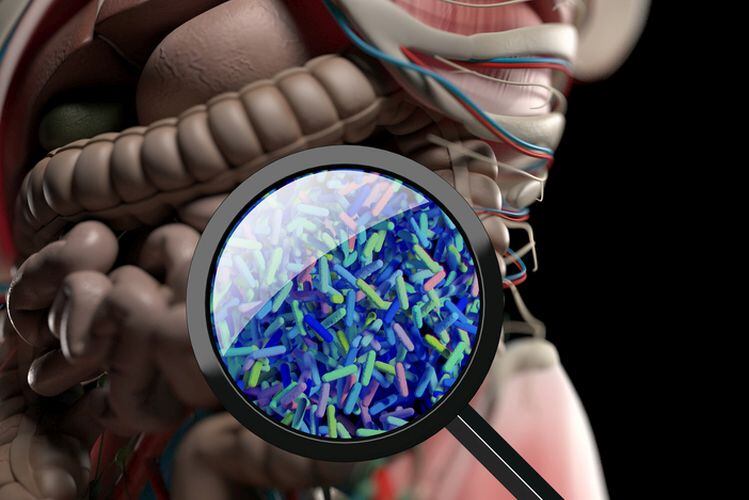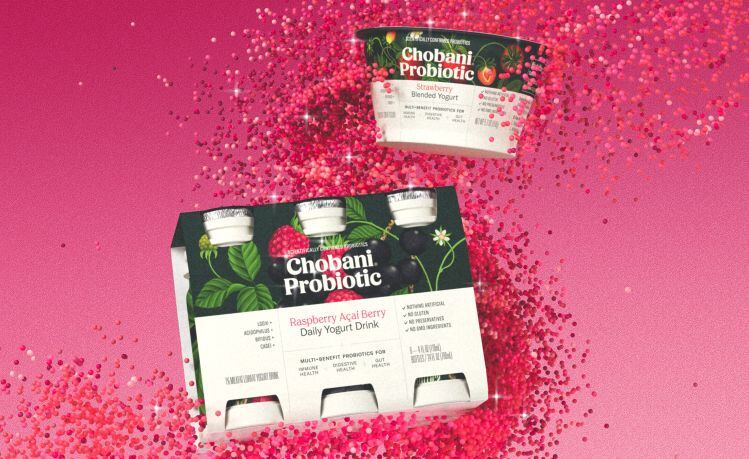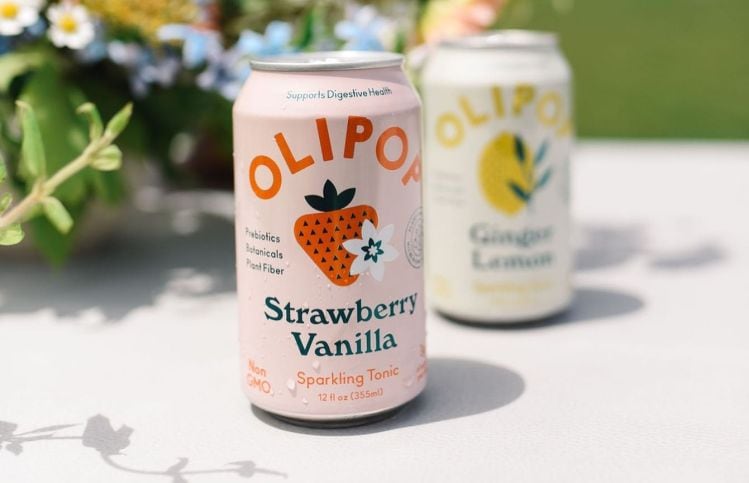Probiotics are live microorganisms that confer a health benefit, and prebiotics are food for probiotics (often fibers selectively utilized by host microorganisms). So what are postbiotics?
There’s no official definition, yet* (references to postbiotics start appearing in the scientific literature more regularly from around 2014), and the average consumer is likely nonplussed by the term right now. However, postbiotics are sometimes described as the ‘waste’ or byproducts of fermentation, and could include metabolites such as short-chain fatty acids, proteins and peptides, and/or discarded matter from beneficial microorganisms. Or they could be a heat-treated or ‘inactivated’ probiotic.
‘HT-BPL1 does not contain live microorganisms and is much more tolerant to heat’
ADM has invested heavily in probiotic strains such as BPL-1 (which human clinical studies suggest can reduce visceral fat and abdominal circumference).
But it’s now seeing growing interest in the ‘postbiotic’ heat-treated version (HT-BPL1), which can be used in a wider range of food and beverage applications, and appears to have similar effects, despite its ‘inactivated’ status, Dr. Janice Rueda, VP, nutrition science business development, told FoodNavigator-USA.
“Our HT-BPL1 postbiotic can deliver similar benefits with a strain that is no longer living [ADM has one human clinical study on HT-BPL1 and more in the pipeline]. Postbiotics retain stability during harsh processing conditions making it possible to incorporate them into a wide variety of food and beverage applications that would be otherwise unsuitable for probiotic inclusion. We've incorporated it into a wide variety of products, as it's really easy to work with.
“HT-BPL1 does not contain live microorganisms and is much more tolerant to heat, making it ideal for use in products like confectioneries, snacks or baked goods, as well as beverage applications, all of which can be subject to harsh thermal processing conditions.”

WHAT ARE PROBIOTICS? According to the World Health Organization, probiotics are “live microorganisms that, when administered in adequate amounts, confer a health benefit on the host.”
When you think about probiotics, you need to think about the genus, the species and the strain (and no two strains are the same), says the International Probiotics Association. For example, for Lactobacillus rhamnosus GG (often referred to as LGG), the genus is Lactobacillus, the species is rhamnosus and the strain is GG.
WHAT ARE PREBIOTICS? According to the International Scientific Association for Probiotics and Prebiotics (ISAPP), a prebiotic is: “a substrate that is selectively utilized by host microorganisms conferring a health benefit.”
WHAT ARE POSTBIOTICS? There's no formal definition yet*, but according to a recent paper in the journal Nutrients, “Postbiotics include any substance released by or produced through the metabolic activity of the microorganism, which exerts a beneficial effect on the host, directly or indirectly.”
Picture: @GettyImages-Tero-Vesalainen
How does HT-BPL-1 work?
She added: “There’s no real solid agreed-upon definition of postbiotics other than they are not live, but what’s really exciting [to research] is what are the mechanisms of action? Is it the cells themselves, the constituents of the cell walls that exert the effects? Is it the polysaccharides in those cell walls. Is it metabolites or other compounds?”
In the case of HT-BPL-1 - which is self-determined GRAS - she said, “We do understand that mechanistic function. It’s associated with Lipoteichoic acid (LTA), a constituent of the cell wall that has interaction in a specific cell signaling pathway, which was a really exciting thing to understand more fully, as now that we know that target we can start honing in on developing ingredient combinations that can advance that effect.”
Given that HT-BPL1 "improves the overall populations of the microbiome," could it also be described as a prebiotic?
“It is possible and perhaps likely that HT-BPL1 has prebiotic activity, but we have not yet conducted the research to establish that,” said Dr Rueda.
Consumers and postbiotics
So how are consumers thinking about postbiotics?
Right now, most US consumers aren’t familiar with the term, although that will likely change over time as more products hit the market (one example is Cargill’s Epicor yeast fermentate, which is marketed as a postbiotic), predicted June Lin, Global VP, marketing, health & wellness, at ADM.
“Consumers are looking for benefits, so they are looking for terms like supports digestive health, or whatever, and then they can turn over the pack, look at the ingredients, and do research online. That’s where they can educate themselves about the differences between a pre, pro or postbiotic.”
Probiotics: What we're seeing from formulators right now is, 'How can we get an immune health message into our products?'
As for probiotics, ADM's portfolio includes products with a wide range of benefits, from skin health to digestive health, immune health, oral health and metabolic health, said Dr Rueda. However, immunity is definitely top of mind for many customers right now, she said.
"What we're seeing from formulators right now is how can we get an immune health message into our products? And we have so many tools in the toolbox to help them develop that story, from pre- and probiotics, to botanicals."
Moving beyond bowel movements to the microbiome and health
According to Mintel, 2,000 new products have been launched in the US in the past five years containing probiotics, said Lin.

Within this set, the key claims are ‘probiotic/contains probiotics’, digestive health, and immune system health, she said. However, “over the past two years, we’ve seen increases in claims targeting joint, brain and weight management.”
And as the messaging shifts from a narrow focus on bowel movements to something more holistic, consumers are thinking about gut health differently, she said, “Consumer understanding of the microbiome and the role of prebiotics, probiotics and postbiotics, has changed considerably in recent years.
“Consumers have a greater awareness and understanding of the foundational role of the gut microbiome on individual aspects of health, such as metabolic health, immune function and the impact on overall emotional well-being.”
That said, when purchasing a probiotic, “more than half of consumers are [still] primarily looking for digestive health benefits with slightly fewer seeking out probiotics for general health and wellbeing purposes,” she claimed.
When it comes to preferred delivery vehicles, meanwhile, “Consumers are seeking out convenient options for probiotic consumption through foods and beverages which require little change to their consumption habits and routines," she said.
“Many consumers are consuming foods and beverages with probiotic benefits to support a healthy microbiome. Our research shows that among those consumers, 59% are using functional foods; 57% are using supplements followed by 51% using functional beverages.”
*A consensus statement on the definition and scope of postbiotics is currently being drawn up by the International Scientific Association for Probiotics and Prebiotics (ISAPP).
From pre-clinical work to human clinical trials
So how does ADM identify potentially promising pro- and postbiotics before conducting human clinical trials?
ADM – which acquired Biopolis, a provider of microbial technologies based in Spain, in 2017; and UK-based Probiotics International Limited (Protexin) in 2018 - employs several preclinical models, as well as ‘-omics’ technologies, including genomics, transcriptomics and metabolomics, enabling it to characterize the interactions of specific nutrients and ingredients on host microbiome populations, explained Dr Rueda.
“The C. elegans [a small soil worm or nematode] model is central to our screening program, and it has several attributes that make it ideal for this purpose: It has a short and reproducible life span; it's easy to cultivate; and its genome has been fully sequenced. An example is a published paper describing the effects of the HT-BPL1 on fat reduction in the C. elegans model within the matrix context of powdered infant formula.
“With that pre-clinical mechanistic understanding, we can then move into human clinical trials, where we demonstrate safety and effectiveness of these unique products.”




